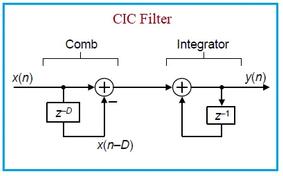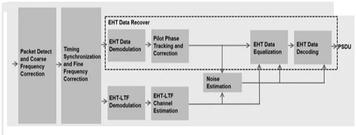
100 Gigabit Ethernet Physical Layer (100 Gbps Ethernet PHY)
Explores the architecture and features of the 100 Gigabit Ethernet Physical Layer (PHY), including PCS sublayer, multilane transmitter and receiver concepts.
Showing 17 posts (Page 1 of 1)
Advertisement

Explores the architecture and features of the 100 Gigabit Ethernet Physical Layer (PHY), including PCS sublayer, multilane transmitter and receiver concepts.

Explore the architecture and sublayers of the 40 Gigabit Ethernet physical layer, including RS, XLGMII, PCS, FEC, PMA, PMD, and AN.

Explore Cascaded Integrated Comb (CIC) filters: their structure, applications in signal processing, design guidelines, and key advantages for real-time tasks.

Explore the fundamentals of fading in wireless communication, including large-scale and small-scale fading, flat fading, frequency-selective fading, fast fading, slow fading, and relevant models.

Explore the key differences between Frequency Division Multiplexing (FDM) and Orthogonal Frequency Division Multiplexing (OFDM) techniques, including bandwidth efficiency, data rate, and applications.

Explore the methods for interfacing the Physical (PHY) and Medium Access Control (MAC) layers in wireless communication systems like WLAN, WiMAX, and LTE. Learn about data transmission and control interfaces.

Explore the LDACS2 physical layer, focusing on its single-carrier technology, TDD operation, and key components in the transmitter and receiver.

A comparison of MIMO (Multiple Input Multiple Output) and SISO (Single Input Single Output) techniques, highlighting their differences in antennas, data rates, and applications.
Explore the similarities and differences between OFDM and DMT, two advanced modulation techniques used in ADSL and wireless communication systems.

Explore the differences between OFDM and OFDMA modulation schemes, focusing on multiple access, resource allocation, and suitability for various wireless communication systems.

Explore OFDMA basics, frame structure, and physical layer with a Mobile WiMAX (IEEE 802.16e) example. Learn about subchannel formation, data mapping, and more.
Explore PAPR in wireless systems, its impact on performance, and various reduction techniques like clipping, scrambling, SLM, and PTS.

Explore the key differences between SC-FDMA and OFDM, including PAPR, frequency offset sensitivity, and application in wireless communication systems.

A comparison of SC-FDMA and OFDMA modulation techniques, focusing on parallel vs. serial transmission, multi-carrier vs. single-carrier aspects, symbol length, and PAPR.

Explore the fundamental differences between Single Carrier and OFDM modulation techniques, their respective advantages, disadvantages, and applications.

Explore the TD-SCDMA physical layer, focusing on the TDD mode within the UTRA framework. This overview details the transmitter modules in a 1.28Mcps system.

Explore the WiFi 7 physical layer (PHY) with a block diagram of transmitter modules for Access Points (APs) and Stations (STAs). Key enhancements and differences explained.
Advertisement